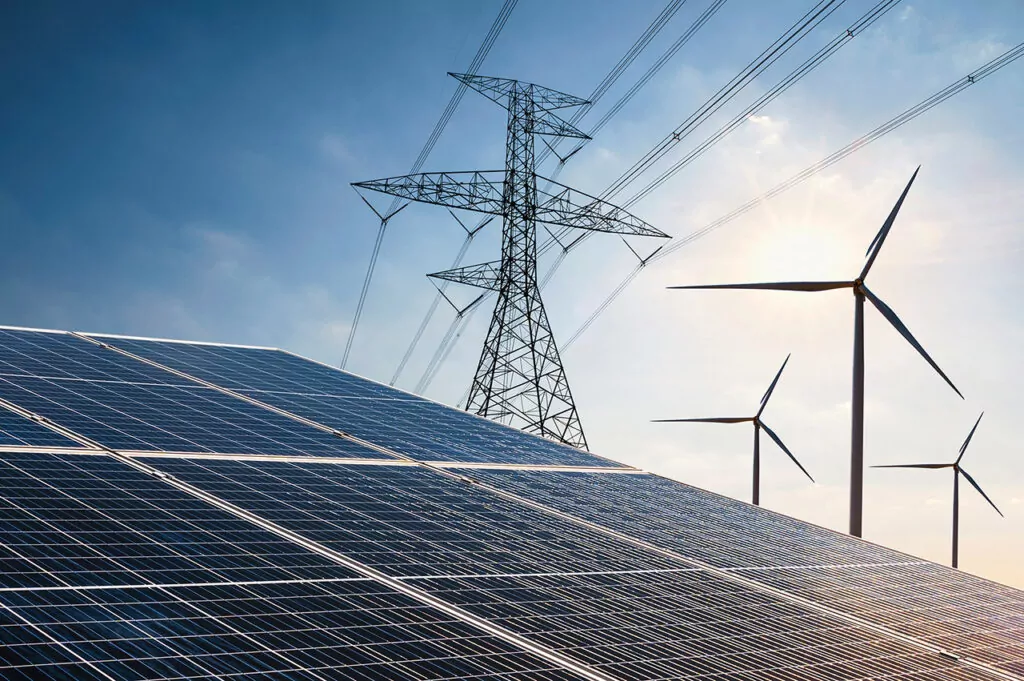What’s Top of Mind for the Renewable Energy C-Suite

Despite being a time of uncertainty for those in the renewable energy space, renewable energy experts agree that the market is poised to see a surge in momentum.
What renewable energy leaders are talking about and taking note of include the following:
- Additional IRS guidance on the Inflation Reduction Act (IRA) has finally been released.
- Consensus seems to be that the Fed won’t raise interest rates again, thereby stabilizing the cost of capital.
- Supply chain delays persist, but developers have acclimatized to the disruption.
- Responding quickly to changing market conditions will be key for all industry participants.
Finance in the IRA Era
Leaders in the renewable energy space agree that the extension of the federal tax credits for wind and solar, as well as the widening eligibility for new technologies, are all boons for the industry. Supply of tax equity will (as always) be critical, but the industry is already attracting new investors. It is not yet clear if capital supply from new corporate investors will be able to meet demand, but most believe more renewable energy financing should occur in 2023 than in the past given transferability and other ESG drivers.
The IRA will give a robust boost to emerging sectors such as energy storage, renewable natural gas, clean tech manufacturing, and green hydrogen. Due diligence protocols are being developed for the tax credit transfer market, with expectations of a more streamlined process, shorter closing timelines, and greater tolerance for merchant exposure.
While the IRS proposed guidance on tax credit transfers and direct pay has now been released, most in the industry are in the early stages of determining the legal, financial, and accounting nuances of the text. Finalization of the guidance will ultimately create a backstop of certainty and is expected to stimulate the industry over the next several years.
Deal Origination in an Ever-changing Market
The way in which companies approach the market is evolving. With a wide variety of new market entrants, bringing together parties who otherwise might not have interacted is becoming a critical part of creating opportunities.
Demand for high-quality renewable energy platforms, as well as operating assets, remains high and M&A volume is expected to grow. Current market conditions are forcing renewable energy companies to reevaluate how projects are vetted. Sponsors are also reconsidering their long-term growth strategies and efficiency in response to a higher cost of capital. Additionally, buyers are becoming more granular with their analysis of project assumptions, developing more stringent methodologies for assessing value and new strategies for how to best tackle the market.
Battery Storage is Poised for Growth
Battery storage is one of the fastest growing technologies in the renewable energy sector. However, the steep learning curve for many new developers is still a challenge. Many energy storage system assumptions that were used two to three years ago have proved inaccurate or changed. Now, companies are getting far more granular in their assessment of system optimization, operation, degradation, and long-term maintenance. This has improved the accuracy of the fair value calculation of the expected useful life of projects.
Banks are still evaluating the risks and rewards of fully merchant storage projects. They have begun to accept more merchant risk in project assumptions but still want some contracted revenue. Credit transfer should provide some comfort, but not many fully merchant projects are expected in the space for some time.
A New Cohort of Risks
Changes in the industry are happening at a rapid pace, bringing a cohort of new unknowns for developers, investors, and sponsors:
- Power price forecasts have been shifting dramatically. Weighted average solar and wind prices remain under pressure, with resulting impact on Sponsor returns and valuations. Project location has always been an important consideration, but a deep understanding of the regional power market conditions and specific nodal location remains critical.
- Technology optimization is important for consistent revenue. Fine-tuning system performance to ensure energy price capture is essential for maximizing revenue at peak hours.
- Supply chain disruptions remain despite the industry moving past COVID-19 lockdowns. Average capital expenditures for wind and solar have risen across the country. Wind has proven to be more resistant to supply chain issues, but solar and storage are still feeling the effects of shipping delays. Solar module shipments are being delayed years, with reports of some developers signing contracts for 2027 module delivery.
- Transmission permitting and interconnection delays are becoming chronic for the industry. Entire geographies are being chosen by the relative risk of interconnection delay in that area.
Decarbonization Provides Opportunities
The decarbonization sector is providing a tremendous number of opportunities for new companies across a broad range of technologies such as carbon capture, utilization, and storage (CCUS); electric vehicles (EVs); renewable natural gas; and green and blue hydrogen. Deployment of these technologies will depend on financing, risk tolerance of sponsors, and guidance from state and federal government.
CCUS is expected to see growth over the next several years after the first cohort of completed transactions is announced in the coming months. EVs and EV charging infrastructure provide a high volume of opportunities that will likely see steady growth as the nation moves away from internal combustion cars. Moreover, initial analysis shows that the IRR in green hydrogen is strong and may lure in many investors.

